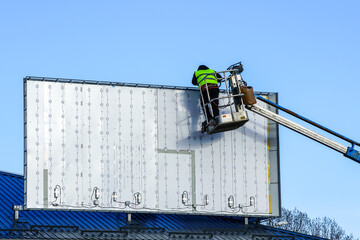LED video walls are an efficient and effective way to display visual content. Led Wall can be used indoors or outdoors and are a great solution for displaying text, images, and videos. They are also a great way to promote your business. They can be found in offices, restaurants, and shopping centers.

Installation process. LED wall installation is a complicated process that trained professionals can only do. It involves a lot of thought and planning. First, you need to determine where the display will be used. This will be determined by the space available and whether there are weight or power supply limitations.
You should also consider the viewing distance of the LED display. This will determine the pixel pitch needed to allow people to view the screen from a certain distance. For example, if the LED video wall will be displayed from 8 feet away, you need to make sure that the resolution is high enough so that people can see a clear image even when they are at a distance.
LED walls are the latest technology in video displays. Their captivating nature, seamless graphics transitions, and ease of customization make them a popular choice for many industries. Unlike projection screens, which use light to reflect an image on a screen, LEDs generate their own lights and display full-color pixels on a flat surface. This results in a sharper, more vivid picture.
They also don’t require bezels, the borders between a screen and its frame. This eliminates the seams that are found on LCD video walls, which is a key feature in creating an immersive video experience. Processors control the display by splitting the image into multiple channels, each with its own sending card on the back of the panel. These send the images to each LED panel and format them so that they all display correctly.
In order to make an LED wall installation a success, the power supply must be chosen carefully. It must be compatible with the LED strips’ voltage and wattage. It must also have a high IP rating to protect the source from the environment it will be in. In recent years, indoor LED displays have gained popularity. This is due to the increasing demand for information, visualization, and intelligence.
This increased demand also requires more power. This power is consumed by the driver and other electronics that manage the LED strips. This means that traditional industry rules of thumb (dividing the maximum power consumption by three) should no longer be used. They should also take into account the black-level power consumption and average usage of the LED wall.
When building your own LED wall, there are a few types of cables you will need to consider. The most important is probably the power supply. You’ll also need to decide which panels are for what purpose and how you want them installed. Then come the data and signal cables that will bring your shiny new display to life. ROE Visual offers a plethora of durable and professional cabling solutions that are sure to meet your needs.
The cables used in the construction of your display will be of varying lengths depending on your specific needs. This is one area where you’ll need to assemble a checklist before you start installing. For example, if you have multiple rooms that need to be illuminated by your LED displays, it’s worth considering the best way to light each room separately. This will make your job much easier when it comes to the actual installation process.
As with any LED display project, you’ll need the right tools and supplies to get the job done. For starters, you’ll need a few essentials like an electric screwdriver, a bit of tape, and a pair of side-cutters to cut the appropriate lengths for your application.